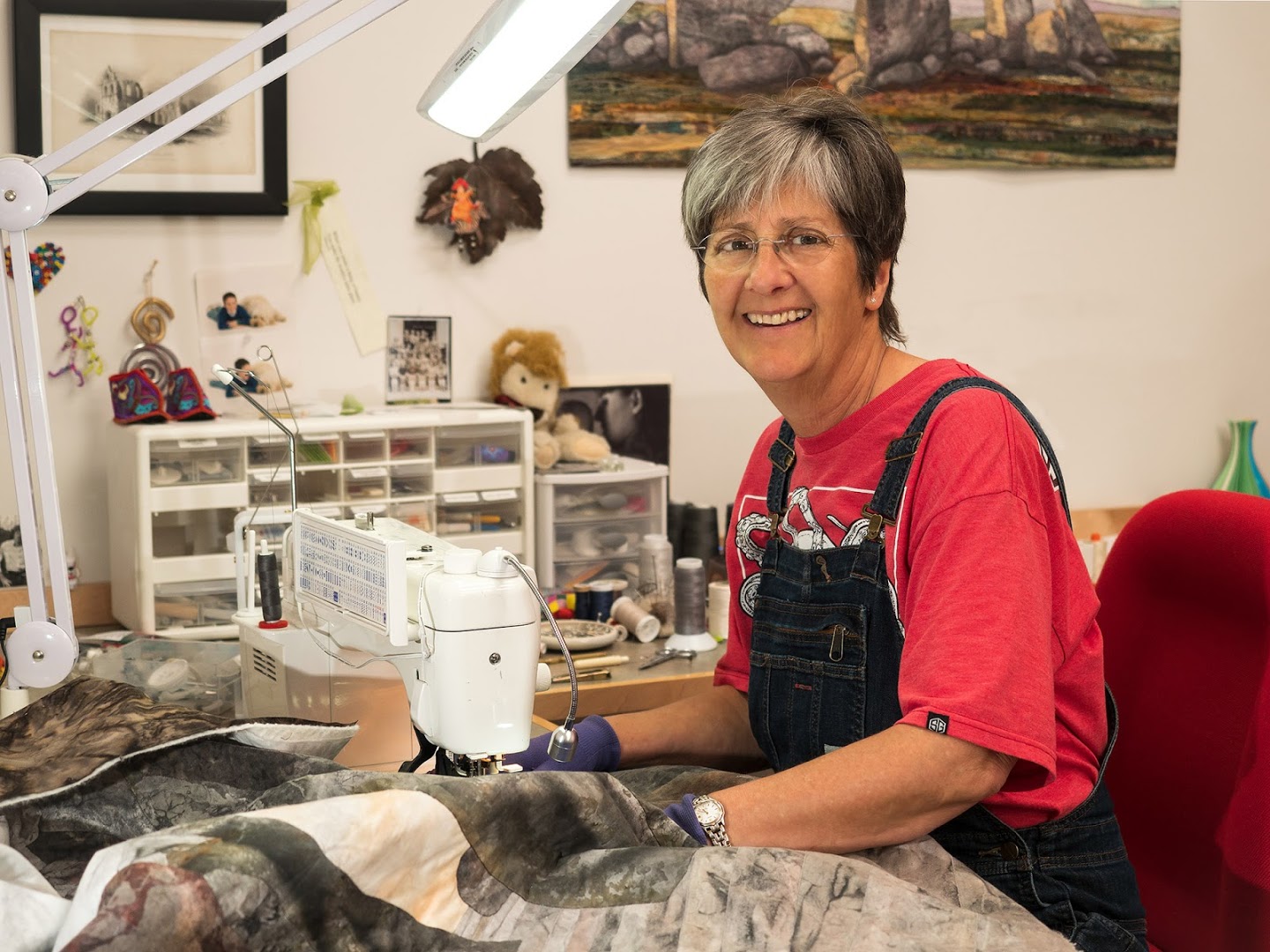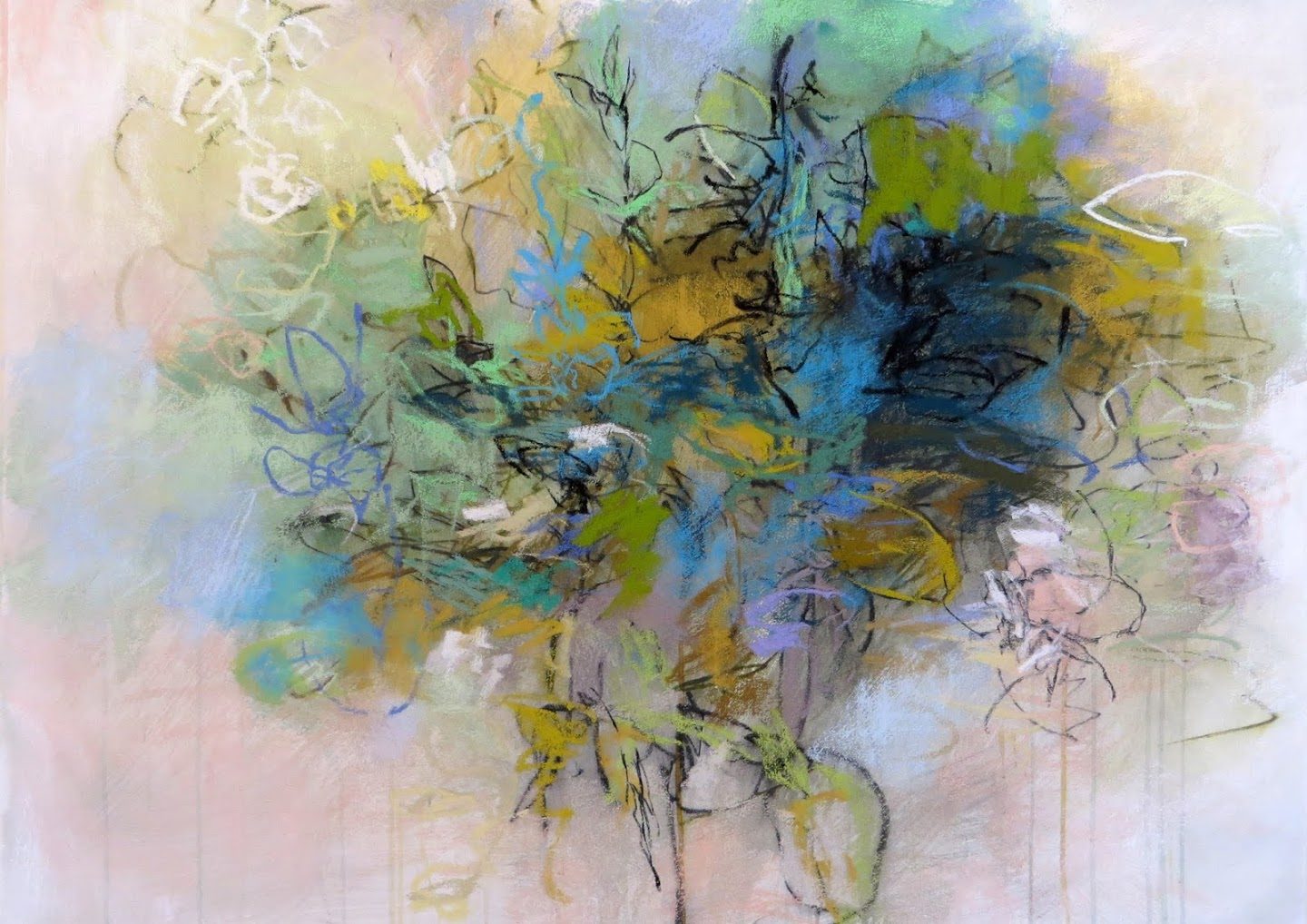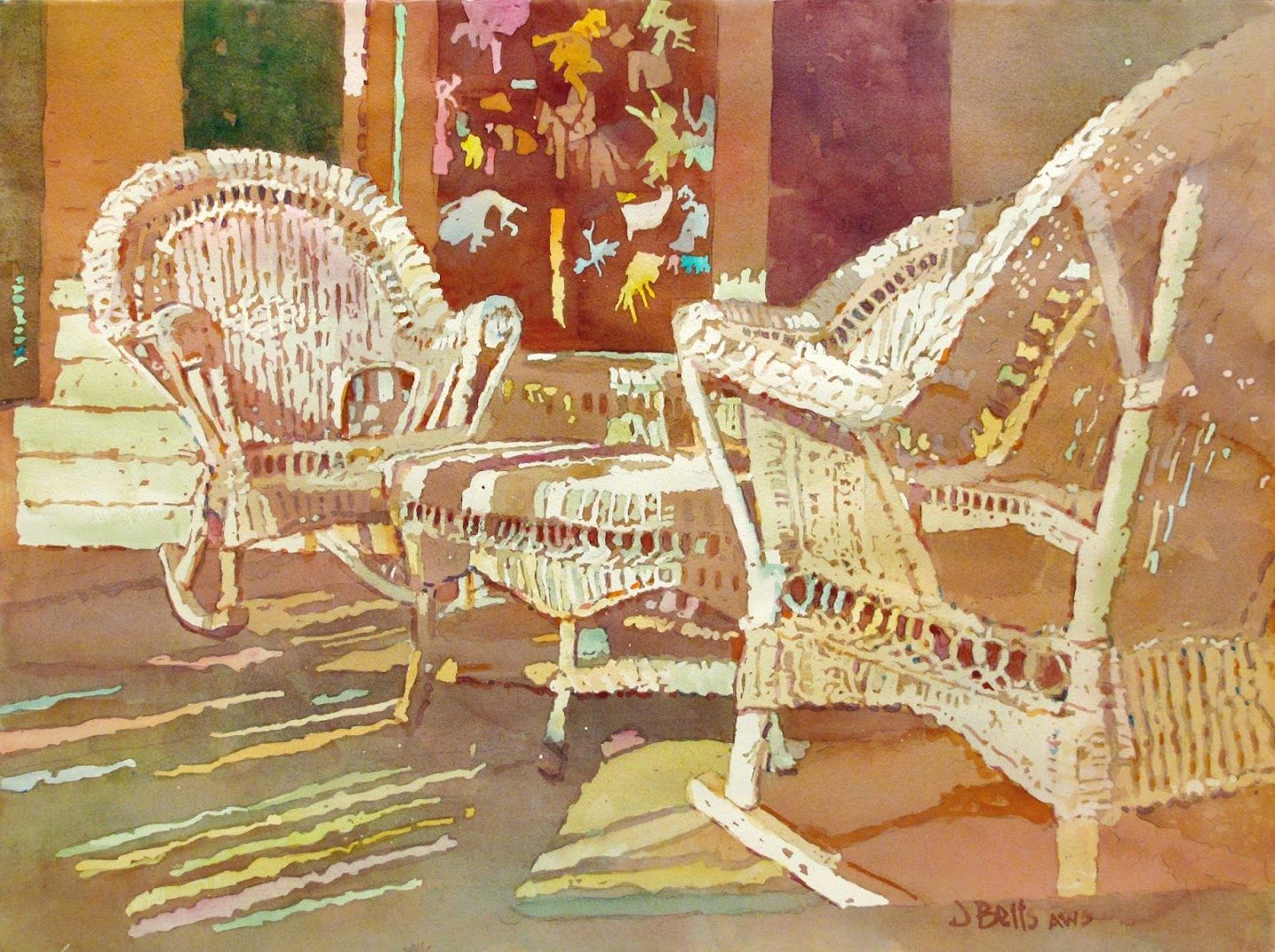Have you ever found yourself unable to find just the right fabric or materials for your creations? Take some inspiration from one of our 2019 fiber art workshop instructors, Denise Labadie, and create your own! Denise is constantly asked about the “stone”, landscape, and sky fabrics she uses in her quilts. There just isn’t much commercial fabric with the types of colors, textures, depth, and complexity that many quilters are looking for. So during Denise’s August 25-31 workshop, participants will create their own!
Q: How does your personal art practice fit into your life? Do you work on it every day? Block off certain time periods for it?
DL: I love sewing, and art quilting. I love working with fabric, even if just to hold it. My art is not separate from the rest of my life; it is fully complementary. I work on it when I can – which is usually daily, though not always – and often until late at night (or into the early morning), but it is not “work” per se. I love just being in my studio, and with my fabric. While my art Is a high priority in my life, I thus do not force myself into a highly structured, rigid work schedule. For me, creativity is not enhanced by a fixed and imposed work environment, but by a dedicated but balanced work ethic.
Q: How do you approach critiques in your workshops?
DL: My workshops are about quilt composition and construction “best practices”. I basically try to teach the “what, why, when, and how” of both new and (oftentimes repurposed) traditional fiber art and quilting techniques. My workshops are highly interactive, are very hands-on, and are focused more on the development of participant creativity, confidence, and experiential exploration and learning than on rigid, one-size-fits-all lesson plans or patterns.
I therefore view critiques as, first of all, one-on-one opportunities to promote the above learning and creativity objectives – perhaps suggesting alternative approaches or techniques, but always while affirmatively and positively empowering the student, not using critiques to get them to do things the “right” way or, worse, “my” way (this is one of the key benefits of not teaching via the use of patterns or rigid “rules” that must be exactly copied). And, to me, “critique” does not mean “criticism”; it instead should represent positive and empowering feedback. I will also promote group feedback depending on my feeling about the group as a whole, i.e., that they have shown and demonstrated the above type of thoughtful co-participant caring and creative support.
Q: How has your work evolved over time?
DL: I no longer have to explicitly “think” about techniques; they are now just friends that I intuitively call on as the need arises. I am now – compared to earlier in my career – absolutely comfortable with the “what, why, when, and how” (as noted above) of quilt construction. I have come to similarly trust my design sense: a native and experienced-based understanding of what will likely, and not likely, work. I am also far more comfortable – based on lots of hard work, multiple complementary art classes, feedback from my treasured (multidiscipline) art critique group, and the like – with the many integrated nuances of composition, color, shadowing, and perspective (all of which are central to my “style – see next question).
Because of the above, I am a much better problem-solver than earlier in my career, so with every new quilt I now purposefully take on compositions that I would never have previously attempted, applying my skills to the solving of ever more complex compositional and/or construction challenges.
















